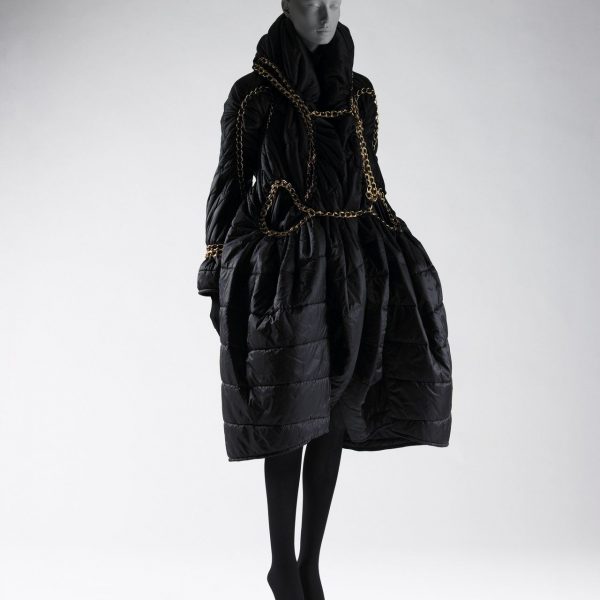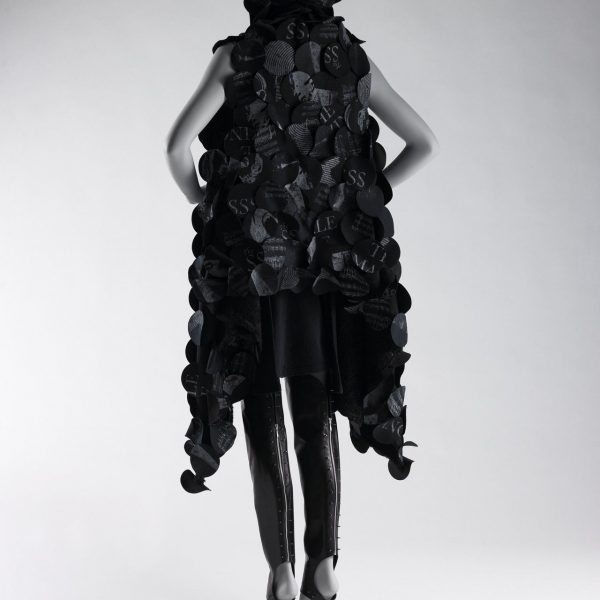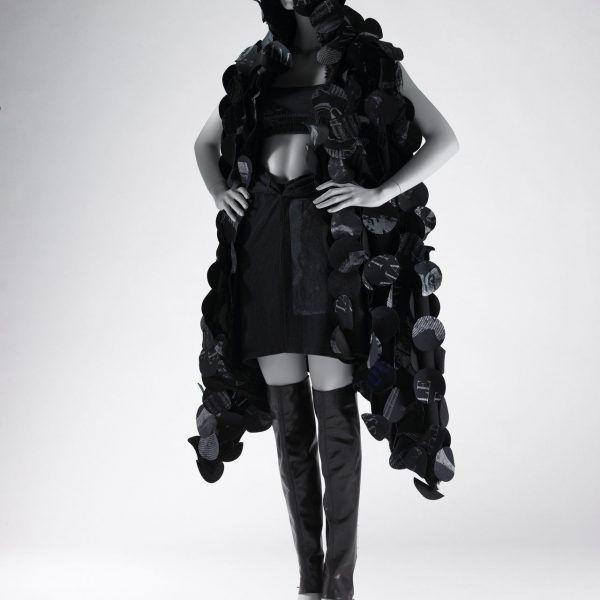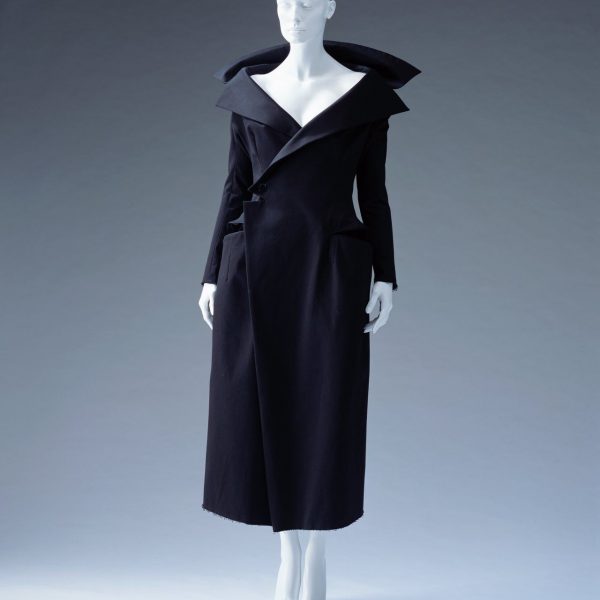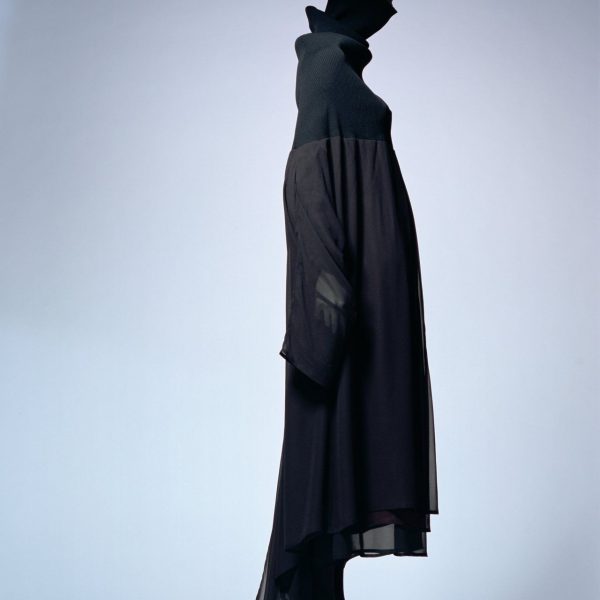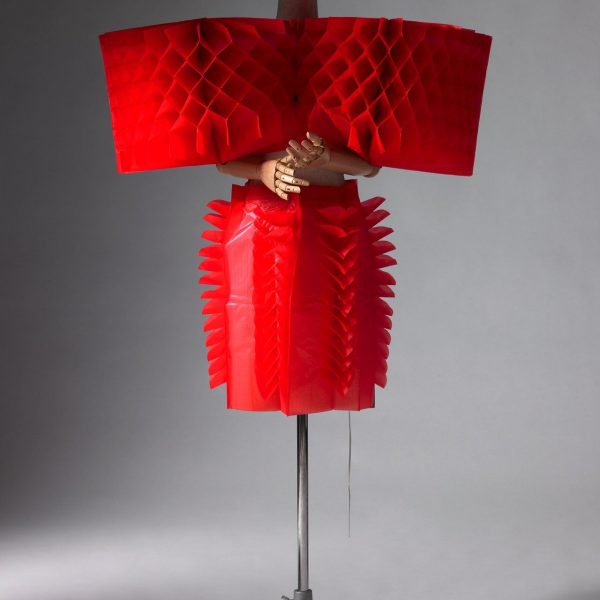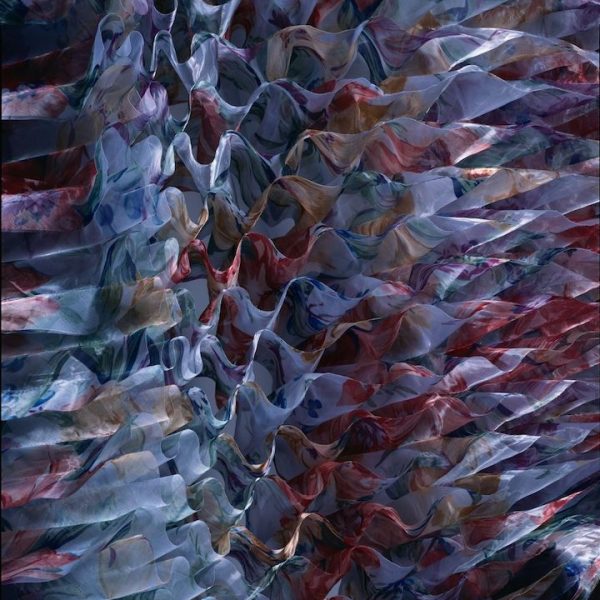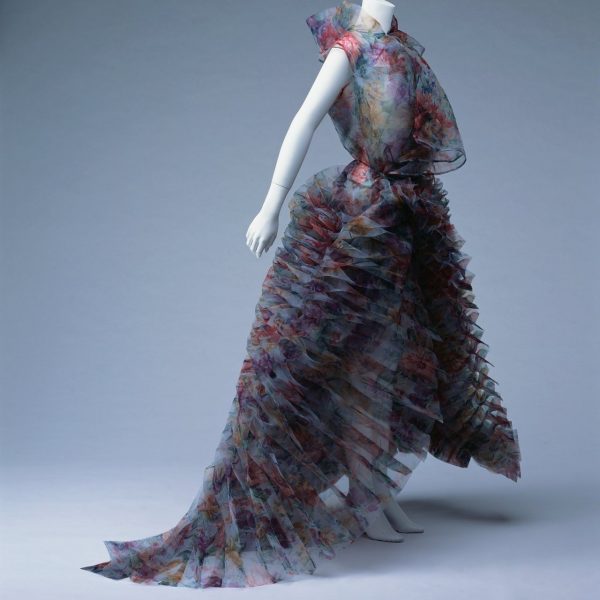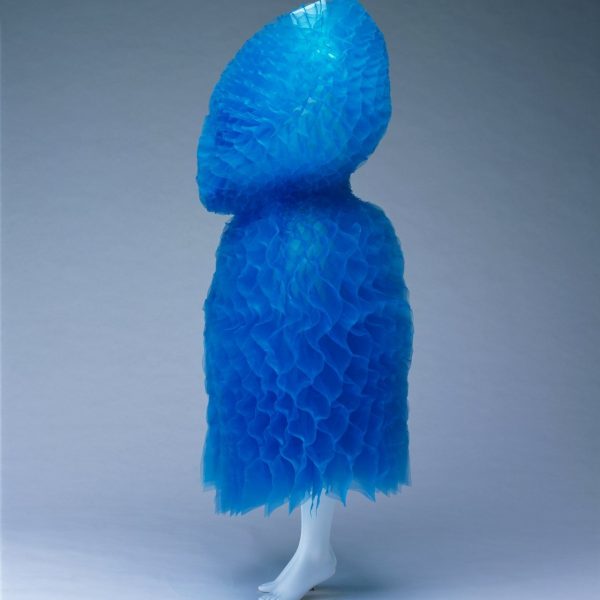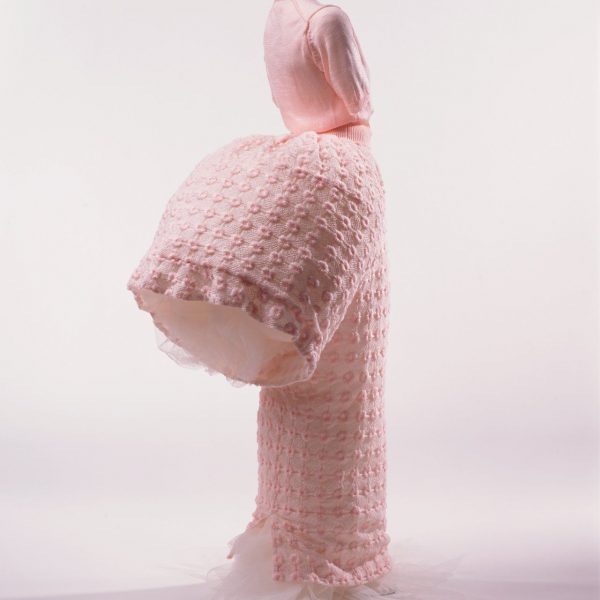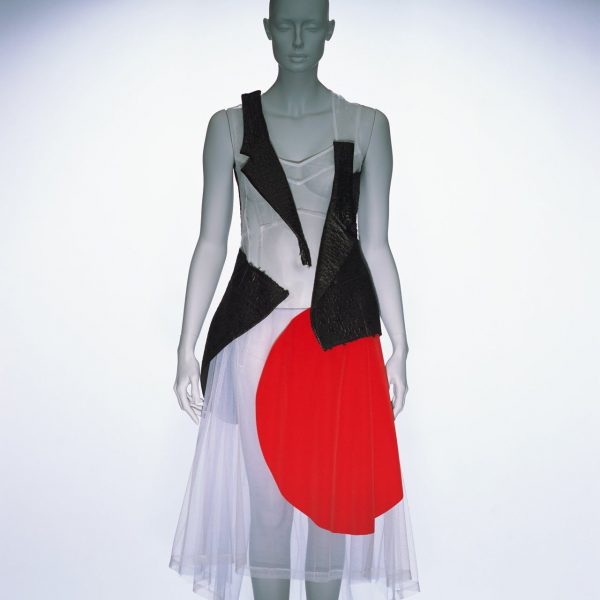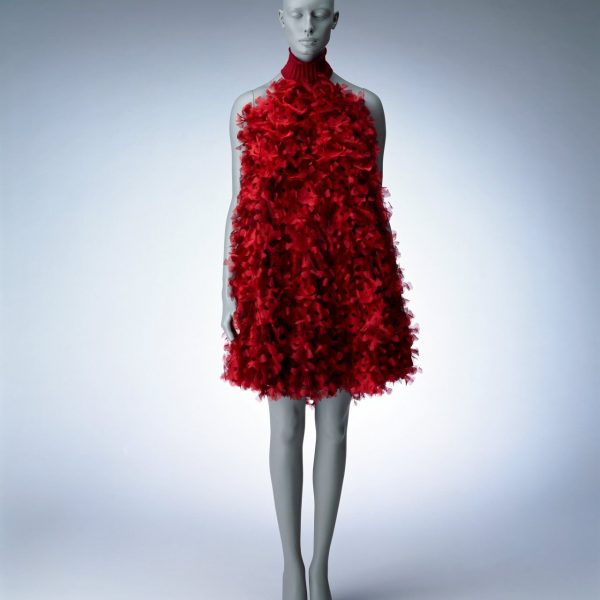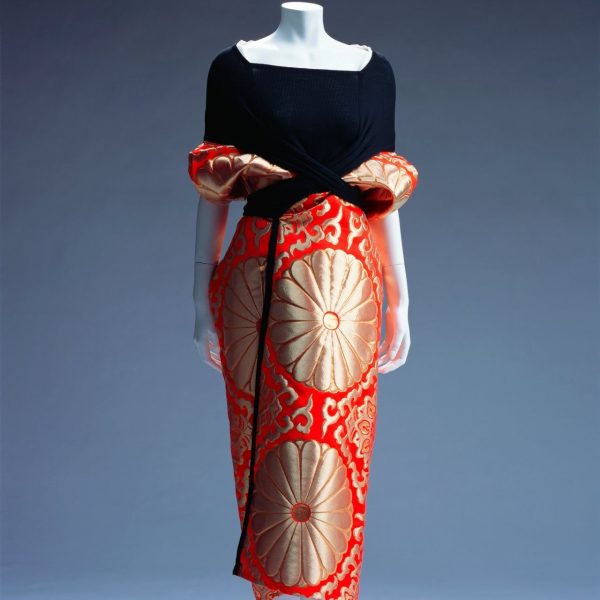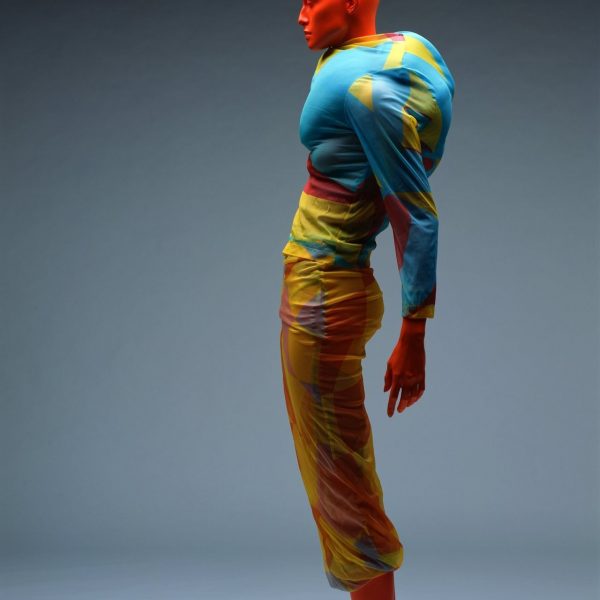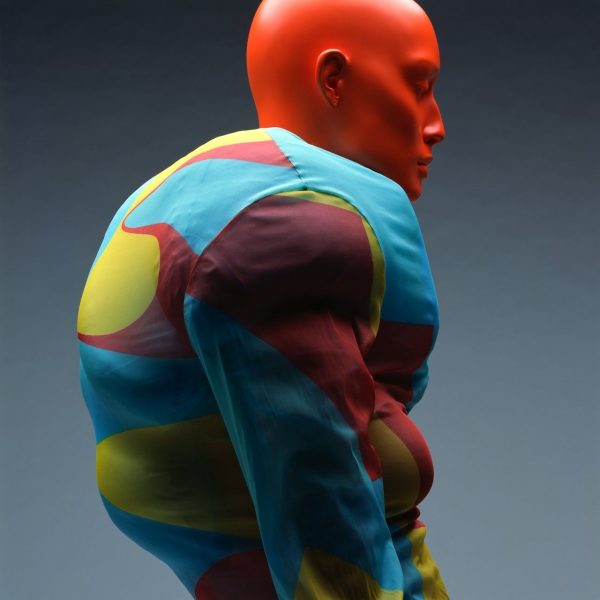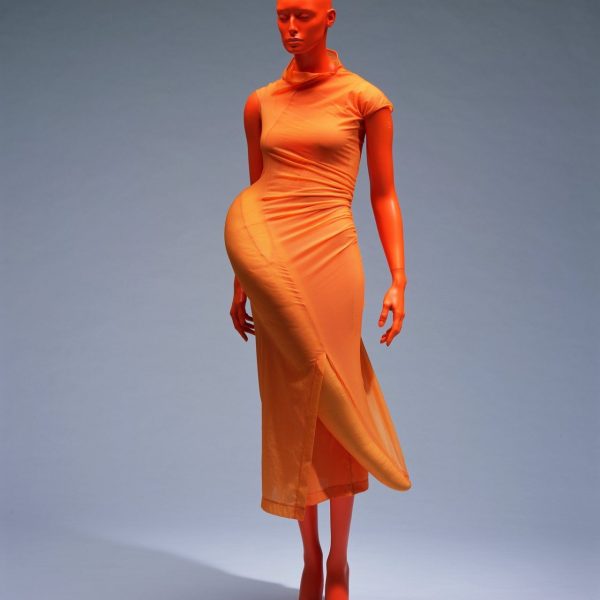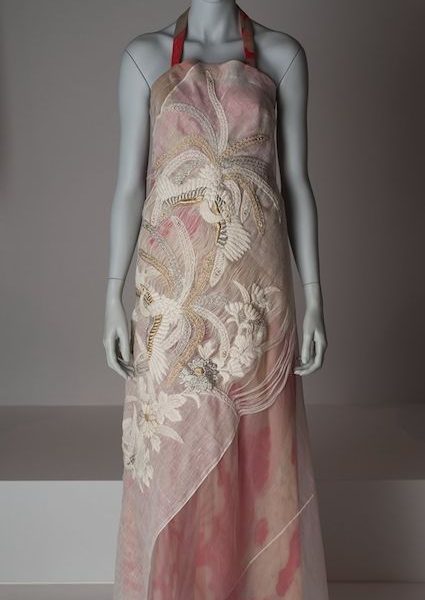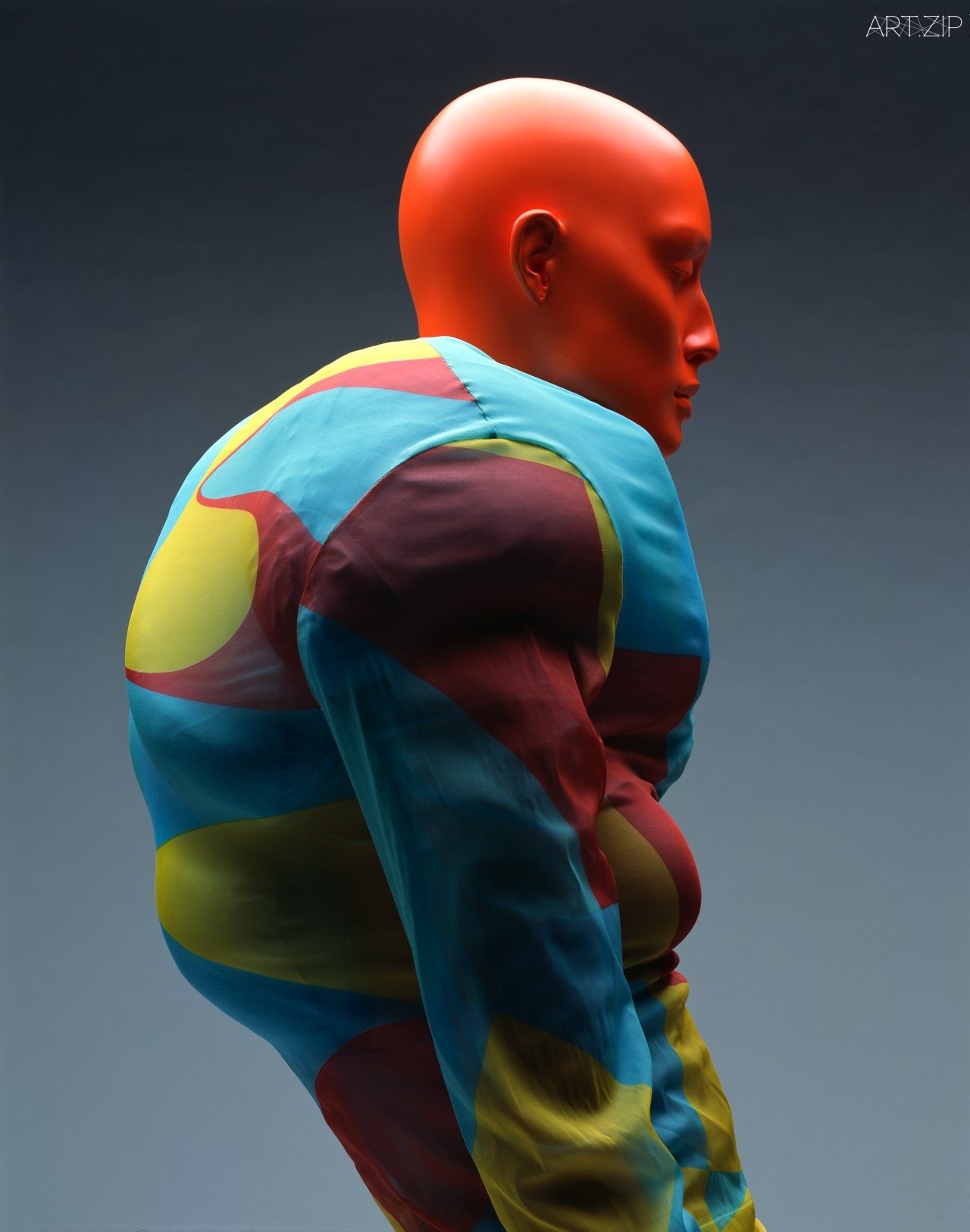
撰文:王梓存
毋庸置疑,日本設計師們和他們所設計的服裝已風靡全球, 然而似乎卻從未有人對日本時裝的發展繁榮及現狀進行過一番檢驗似的審視。正是因為這個念頭, 深井晃子女士才籌辦了《未來之美:日本服裝30年》展,而觀眾們也因此有幸可以把握日本設計在時裝界崛起和繁盛的脈絡並感受日本服飾之美。在2014年11月-2015年2月期間,觀眾們可以在布里斯班當代藝術館欣賞到《未來之美:日本服裝三十年》展。展覽的外圍是關於日本時尚界30年的發展歷史,而核心區則是滿滿的幹貨:上百件日本設計師所制作的衣服盡數被實物展出。
筆者認為,了解日本服裝有兩個圭臬,是為傳承傳統和宣揚“和”文化,這兩者也同樣是日本服裝崛起於世界的關鍵詞。
從傳承上來說,日本社會對於時尚有著數百年的傳承,而另一個有著這種傳承的國家則是法國。日本的戰國時代,由於幕府、大名等社會上層階級對生活品質的追求,作為生活要素中的“衣”也開始變得考究起來。紡織業借此得到了發展,市面上的布料店鋪繁榮異常,故而服裝的材質圖案和花色都漸漸的變得多樣起來。這種風氣自上而下,白丁市井之人也開始註意自己的著裝。而這就是日本時尚的歷史傳承。
在日本文化中,日本人喜愛簡單,和諧與美的東西,例如菊花,菊花也是皇室的標誌。但同時,日本人也認為“美”──真正而純粹的美都是不可以被留住和把握的,例如櫻花,就連織田信長似的梟雄也會吟出“人間五十年,如夢亦如幻”這樣的詩句。將這兩種思想擰在一起便成為了一把打開日本美學盒子的鑰匙,這把鑰匙叫“侘寂”。侘為簡陋之意,講究外簡內秀;寂的另一種寫法是錆,錆是種顏色,這種顏色是礦物或金屬由於時間的腐蝕而留下的斑斑銹色。兩個字組合而成的侘寂,您可以借著兩字的內涵,把玩下個中味道。若是太過抽象,想想暖簾,想想漆物,想想無印良品(MUJI)的風格,想想日料的餐具,想想日式庭院中的石燈與流水。侘寂是可以被留住的且本質的美。這種獨特的美學也融入了日本設計師所設計的衣物中。另外,有趣的是,十九世紀末二十世紀初,法國畫家們曾深受日本浮世繪的影響。
70年代是日本設計師們初露頭角的年代,川久保玲與山本耀司首先登上了國際的舞臺。可以看得出,這個時期的服裝們在模仿西式服裝的前提下正在有意識地塑造自己的個性。直觀的說,這個當年的服裝依然華麗繁復,但是在細微之處卻已有了自己的個性。比如裙擺的紋理正在變得簡單,淩厲而和諧。80年代是日本設計師真正驚艷世界的年代,日式服裝終於形成了自己的風格,川久保玲、山本耀司與三宅一生三人一同打破了西式文化對時尚界的壟斷。這個時期的衣物有著鮮明的日式風格,首先是極少的花紋,甚至有許多衣服是純色且不含花紋的。面料的考究則是另一個特色,在考究的同時選擇樸素而讓肌膚感到舒服的棉、麻等布料,讓人感覺貼心。最後簡單但卻點睛的剪裁有巧奪天工之意,好似衣服本來就這那般樣子,寥寥幾剪便創造出樸素寬大但卻穿著舒適也不會放棄人體曲線的衣服,溫暖且渾然天成。90年代伴隨著日本經濟的衰退,設計師們所設計的衣服則又多了些哲學上的內涵。有些服裝有著畸形的設計,臃腫的背部和腹部,似有蛇盤踞在體內,有著關於母體和束縛的隱喻。而因日本是高度發達且秩序化的社會,個人的特征相對較弱,且在經濟衰頹之時蕓蕓眾生的心境自然也會有微妙的變化,於是還有些服裝是帶著頭套設計的。頭套與衣服的顏色和花紋連為一體,這樣的衣服抹去了個體的面孔,其含義值得玩味。這一時期也有設計師們嘗試將和服融入日常服飾的設計,例如有著和服紋理與圖案的西裝。進入到21世紀,隨著對社會幻滅情緒的加重和受快時尚沖擊的影響,那些已走上神壇的設計師們和新晉的設計師們變成了截然不同的兩支。新晉設計師們扛起亞文化的大旗,拋棄了侘寂的概念,用濃郁的澀谷風加“COOL JAPAN”的口號將服飾設計的繁復,華麗,可愛而又充滿不切實際之感,宛如從動畫中走出的一樣。例如有些高跟鞋就被設計成拖鞋的樣子,或是毛絨玩具的樣子,只是在鞋跟處可以看到被精心掩蓋起來的高跟,這樣的鞋子是顯而易見的對主流文化的一種反叛。就連時裝發布會也不再傳統,通過動畫發布或是讓購物中心的樓梯成為T臺並佐以少女團體的live,這一切除了對主流日本文化的反抗之外也多了些宅與萌的氣息。主流的設計師們則是各自探尋自己的道路,川久保玲的服飾變得鮮艷了起來,也多了大波點和可愛的弧度,換言之隨世情而走;山本耀司的服裝多了些運動氣息,這種氣息在領口和袖口處尤為明顯;三宅一生卻是深化著日式美學,有一件三宅一生的黑禮服,依然走的淡然侘寂之風,和諧更是多了幾分,穿在身上樸素耐看,被疊起來整件黑禮服則如同一朵黑蓮花一樣寂靜而對稱,堪稱精致的藝術品。關於21世紀的這些服飾和設計師們的選擇,在筆者看來現在並不適合為它們做結論,它們的未來還不明朗,也遠遠不到蓋棺定論之時,這些服飾和設計師們,他們的風格,這一切還需要時間去沈澱和檢驗。
一言以蔽之,日本設計師和日本服飾本身的偉大之處都在於,至少在時尚界,是他們首先扛起了東方文化的旗幟,打破了西方美學對於時尚界的壟斷統治。讓東方之美,從巴黎綻放到了紐約,再從東京盛開到倫敦。
In Praise of Shadows
- Junya Watanabe Comme des Garçons / Autumn/Winter 2009–10 / Collection: Kyoto Costume Institute / Photograph: Masayuki Hayashi
- Yohji Yamamoto / Autumn/Winter 1993–94 / Collection: Kyoto Costume Institute / Photograph: Richard Haughton
- Undercover (Jun Takahashi) / Spring/Summer 2006 / Collection: Kyoto Costume Institute / Photograph: Masayuki Hayashi
- Undercover (Jun Takahashi) / Spring/Summer 2006 / Collection: Kyoto Costume Institute / Photograph: Masayuki Hayashi
- Yohji Yamamoto / Spring/Summer 2003 / Gift of Yohji Yamamoto Inc. / Collection: Kyoto Costume Institute / Photograph: Takashi Hatakeyama
Flatness
- Comme des Garçons (Rei Kawakubo) / Autumn/Winter 2012-13 / Collection: Kyoto Costume Institute / Photograph: Masayuki Hayashi
- Comme des Garçons (Rei Kawakubo) / Autumn/Winter 1992–93 / Collection: Kyoto Costume Institute / Photograph: Taishi Hirokawa
- Ohya (Hiroaki Ohya) / Spring/Summer 2000 / Collection: Kyoto Costume Institute / Photograph: Masayuki Hayashi
Tradition and Innovation
- Koji Tatsuno / Autumn/Winter 1993–94 / Gift of Mr. Koji Tatsuno / Collection: Kyoto Costume Institute / Photograph: Taishi Hirokawa
- Junya Watanabe Comme des Garçons / Autumn/Winter 2000–01 / Collection: Kyoto Costume Institute / Photograph: Takashi Hatakeyama
- Junya Watanabe Comme des Garçons / Autumn/Winter 2000–01 / Collection: Kyoto Costume Institute / Photograph: Takashi Hatakeyama
- Junya Watanabe Comme des Garçons / Autumn/Winter 2000–01 / Collection: Kyoto Costume Institute / Photograph: Takashi Hatakeyama
- Comme des Garçons (Rei Kawakubo) / Autumn/Winter 1995–96 / Collection: Kyoto Costume Institute / Photograph: Takashi Hatakeyama
- Comme des Garçons (Rei Kawakubo) / Spring/Summer 2007 / Collection: Kyoto Costume Institute / Photograph: Taishi Hirokawa
- Undercover (Jun Takahashi) / Spring/Summer 2007 / Collection: Kyoto Costume Institute / Photograph: Kazuo Fukunaga
- Yohji Yamamoto / Spring/Summer 1995 / Collection: Kyoto Costume Institute / Photograph: Takashi Hatakeyama
- Comme des Garçons (Rei Kawakubo) / Spring/Summer 1997 / Collection: Kyoto Costume Institute / Photograph: Takashi Hatakeyama
- Comme des Garçons (Rei Kawakubo) / Spring/Summer 1997 / Collection: Kyoto Costume Institute / Photograph: Takashi Hatakeyama
- Comme des Garçons (Rei Kawakubo) / Spring/Summer 1997 / Collection: Kyoto Costume Institute / Photograph: Takashi Hatakeyama
- Akira Isogawa / Autumn/Winter 2005 / Collection: Kyoto Costume Institute
Cool Japan
- Astro Boy by Ohya (Hiroaki Ohya) / Spring/Summer 2004 / Collection: Kyoto Costume Institute / Photograph: QAGOMA
- Tao Comme des Garçons (Tao Kurihara) / Autumn/Winter 2009–10 / Collection: Kyoto Costume Institute / Photograph: Taishi Hirokawa.
Interview with Tarun Nagesh and Akiko Fukai
Mr. Tarun Nagesh, Associate Curator, Asian Art, Queensland Art Gallery and Gallery of Modern Art. Facilitating curator of ‘Future Beauty: 30 Years of Japanese Fashion’ at GOMA.
ART.ZIP: I notice that there are many exhibitions in GOMA which are related with Asian arts. Then I learned that you pay a lot of attention on Asia arts, why?
TN: QAGOMA has had a long commitment to representing Asian art and has one of the most significant collections of contemporary Asian Art in the world. This has primarily developed through the Asia Pacific Triennial, which began in 1993 and has grown into one of the largest exhibitions in Australia. Through the triennial series we have worked with many of the leading Asian artists such as Ai Weiwei, Zhang Xiaogang, Cai-Guo Qiang, Takashi Murakami and Yayoi Kusama, and from each of these artists we have collected major works from some of them have continued to stage solo exhibitions here. The triennial now covers the area basically from Hawaii to Turkey and looks to represent both the established art centres as well as areas that are emerging, and provides a platform where art and artist from across the region can have dialogue between each other as well as amongst leading contemporary practices from Australian and around the world. We look at ourselves as being part of the Asia Pacific and strive to be the leaders in representing all forms of contemporary art from Asia, Australia and the Pacific, alongside our broader programs and collections.
ART.ZIP: Personally, I am addicted to Future Beauty, and I came to the exhibitions many times. As the audience, what do you think they might get from the Future Beauty?
TN: Future Beauty comprehensively covers one of the most influential developments in recent world fashion history, at the heart of the exhibition is how Japanese designers have remained some of the most innovative and experimental but also how they have challenged conventions of beauty, clothing and the role of fashion. So I think audiences will realise how fashion can be used and interpreted in different ways and how different cultures and histories might influence contemporary fashion. The show includes some of the really important collection by pioneers like Issey Miyake, Rei Kawakubo (Comme des Garçons) and Yohji Yamamoto, but also includes younger labels and designers as well as how streets styles and subcultures in Tokyo have continued to position Japan as one of the world centres for avant-garde fashion. Some of the designs are beautiful and elegant and some are wild and outrageous, but there are some really interesting concepts and ideas that inform some of the labels and designs and many of these relate to broader aspects of Japanese art and culture.
Akiko Fukai, Director and Chief Curator, Kyoto Costume Institute, Japan
ART.ZIP: Why did you organize an exhibition for the Japanese fashion of the past three decades?
AF: In Japan, fashion made a great leap forward in conjunction with the growth of the ready-to-wear industry in the 1960’s. Then around 1980, backed by economic prosperity at home, an increasing number of Japanese designers began showing their works in Paris. Amongst them, Rei Kawakubo of Comme des Garçons and Yohji Yamamoto debuted in Paris in 1981. They ingeniously, and sometimes provocatively, began to tear into and remake the Western aesthetic paradigm that had dominated the fashion world up to that time. Those two and including Issey Miyake often termed Japanese ‘avant-garde’ challenged established Western notions of beauty, and eventually bought fashion into a new era. I believe that the time early 1980’s when Japanese fashion garnered fervent attention worldwide is very significant for the fashion history, which had long been created within the western culture. Therefore in parallel with the leap of Japanese fashion, I or KCI had been conceived long-term vision to amassing a collection which carries out a reexamination of Japanese fashion based on actual garments. Meantime there has been much discourse on Japanese fashion. Nevertheless, there had never been a comprehensive examination and verification of the garments themselves created by Japanese fashion designers. This exhibition “Future Beauty” originally stemmed from that realization, and represents a new evaluation of Japanese fashion.
ART.ZIP: Through the exhibition, it demonstrates that fashion designers in Japan are always trying to recreate and innovate for decades, however, in your opinion, are there any elements which have never changed and have penetrated the Japanese fashion of thirty years?
AF: Fabric is an essential element in delivering a new look, texture, and shape. In particular, for kimono, it is fabric which is an absolutely essential element since Kimono’s shape is identical. Japan has, over the centuries, developed an exquisitely sophisticated textile industry.The Japanese designers were well versed in this through their knowledge and understanding of kimono culture. These designers already had their own ideas for fabric when embarking on a design. This contrasts with Western designers who are more likely to choose their fabric from what textile makers make available.Since the first generation of Japanese designers, the relationship and level of collaboration between Japanese designers and their national textile industry has been unparalleled around the globe. As seen in the section,” Tradition and Innovation” in the Future Beauty, I firmly believe this distinctive advantage will be passed on to the coming generations.
ART.ZIP:Do you think that the economic conditions in Japan might influence the costume’s designing?
AF: Yes, it is a difficult moment than before for the fashion designer. The young people do not buy expensive garment but the lowest price garment such as fast fashion or Uniqlo. However this is not only because of the economic condition but because of the mass consummation of information. We are in the transitional moment of the information revolution right now even in the fashion field. Therefore desingers in the younger generation do not embrace the same image or feeling toward designer than before. They are seeking another image of designer. They do not conceive to spread their activity in the world-wide, but rather try to find the people who can co-own the world of the designer’s creativity, focused more on eco conscious, hand –made, one –off, etc. and to deliver this world to them. By the internet, it might work I think.

